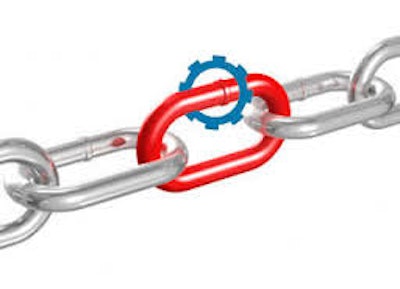
 As economies become more global, supply chains have become more complicated. This places even greater emphasis on continuity as a strategic operational element.
As economies become more global, supply chains have become more complicated. This places even greater emphasis on continuity as a strategic operational element.
“Because companies are highly dependent on suppliers and contract manufacturers, the linear supply chain of old is gone forever,” Andrew Atkinson, Director of Product Management for E2open, states. “You are trying to respond to demand you can’t predict with supply you don’t control. The assets belong to your partners and you have to work with them to make things happen.”
Atkinson points to a specific example of how cellphone maker Ericsson, without access to microchips needed to produce their phones, implemented a plan that ultimately led to a massive loss and their exit from the industry.
“A lightning strike on a power pole caused a machine in a chip factory to burst into flames,” Atkinson recalls. “If you have a fire in a clean room, it’s no longer a clean room. These chips were used to make cell phones and it had two major customers, Nokia and Ericsson. Nokia had policies and procedures in place to ensure continuity of supply. Ericsson did not. As a consequence, Ericsson took a $200 million charge that quarter and exited the business.”
A weather event is just one of many ways that the supply chain could potentially be breached. Not all supply chain disruptions will result in something that drastic, but they could still resonate throughout an organization.
“Even if your result is less dire than that, you aren’t able to ship as much product as you like or you have to ship it late, you are impacting customer satisfaction levels, your margins or even your top line,” Atkinson said. “The reason these disruptions happen is manifold, you could have weather events, political unrest, port strikes, a lot of things can go wrong.”
Atkinson said four things are critical in ensuring continuity of supply, visibility, intelligent response and network-wide collaboration. He said many supply chain disruptions don’t happen in-house, but further down the line with suppliers.
- “You can’t manage what you can’t see and if you don’t want to be blindsided, you have to extend your visibility as far into your vendor trading network as you can,” Atkinson said. “A lot of companies will have visibility out to their contract manufacturers but they won’t have vision beyond that and many of the problems that cause continuity of supply disruptions happen on the second and third tier.”
- Just because a certain material isn’t accessible at your current factory doesn’t mean it is completely inaccessible and knowing what your company has where is critical. “You need to know what materials you have where around the world.”
- He said partnering with suppliers, sharing data, and network collaboration is important for responding to disruptions and re-establishing a product pipeline. However, he cautioned that data needs to be expressed in a way that is relevant to the business for it to have any impact. “You need to be able to put your data into a business context for it to be useful,” Atkinson said.
- “Inventory is kind of a double edged sword,” Atkinson said. “If you build up your inventory as a buffer, that can help protect you against supply chain disruptions. The downside is that inventory is working capital, so it’s expensive.” Perhaps more costly than holding the inventory itself is having to move it at the last minute, something many companies don’t take into account. “Air is eight to 10 times as expensive as water transportation,” Atkinson said. “If you’re doing a lot of ‘just in case, just in time’ shipping, that’s an expensive proposition. It can have major impacts on your margins. A lot of times companies will have ‘just in case’ inventory and when they close their quarter, they find that a product that was expected to be profitable actually lost money because the total landed cost of that product was much higher than expected due to disruptions.”
Staying vigilant, managing inventory and knowing how to respond when the chain is broken are critical in managing continuity of supply. Just one missing product could shut down an entire operation. “You could have a $10 million machine you are trying to ship and if you don’t have a $10 circuit breaker that lets it turn on and off, it could prevent you from shipping. It’s important for manufacturers to have systems that allow them to be agile.”

The call for presentations for the Continuity Insights Regional Business Continuity Conference is open until June 30, 2015.






















